Schneeberg über Stadelwandgraben 29.7.2018
Herwig Gießwein wants to do a long training walk with high ascent for his coming high Alpine tourand and suggested to walk Schneeberg via the Stadelwandgraben. As always, Herwig doesn´t want to use the rack railway, on the other hand I want to look for the Hungarian gentians growing on the Schneeberg plateau, and moreover, 1.600 m of descent are too much for my knees. So, once more I have reserved in advance tickets for the train down.
Through the Stadelwandgraben ("Barn wall gorge") leads the highest, steepest and most direct ascent on the Schneeberg. Near 1.600 m of steep ascent have to be tackled, without a significant breather.
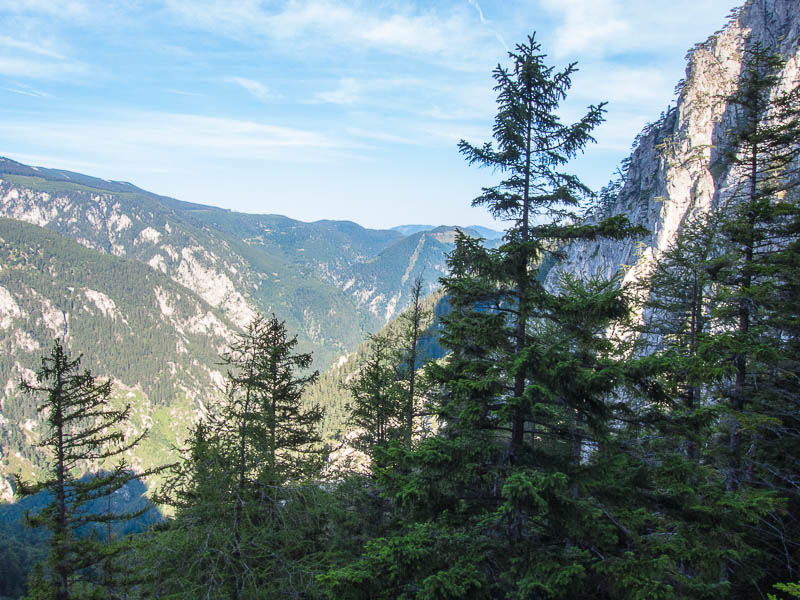
When we started at 6:20 a.m., all of the Höllental was still in shadow, and the route leads up through the dark and shady, but pleasantly cool ravine; so, the first picture is taken at about 8 a.m., at already about 1.080 m ASL, more than 500 m above our start.
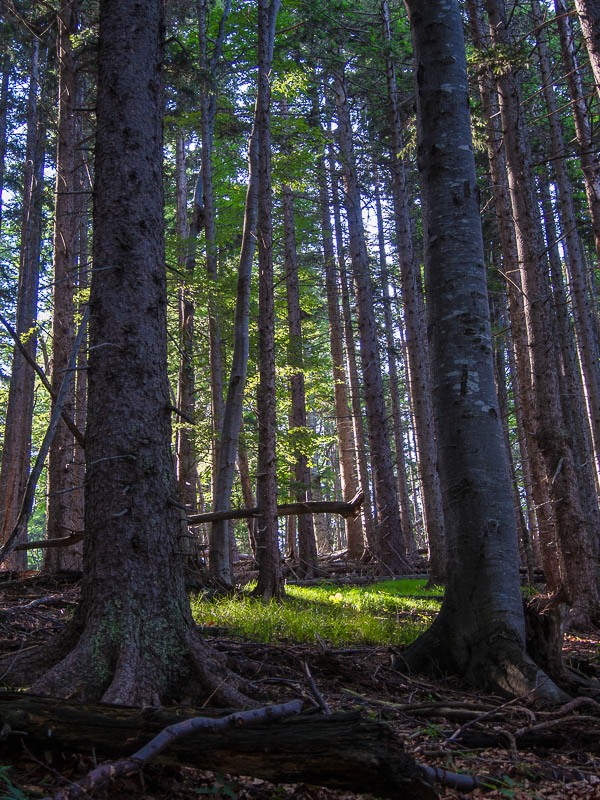
Shortly thereafter, at 1.120 m, we reach a small saddle, where we first see the sun on our path.
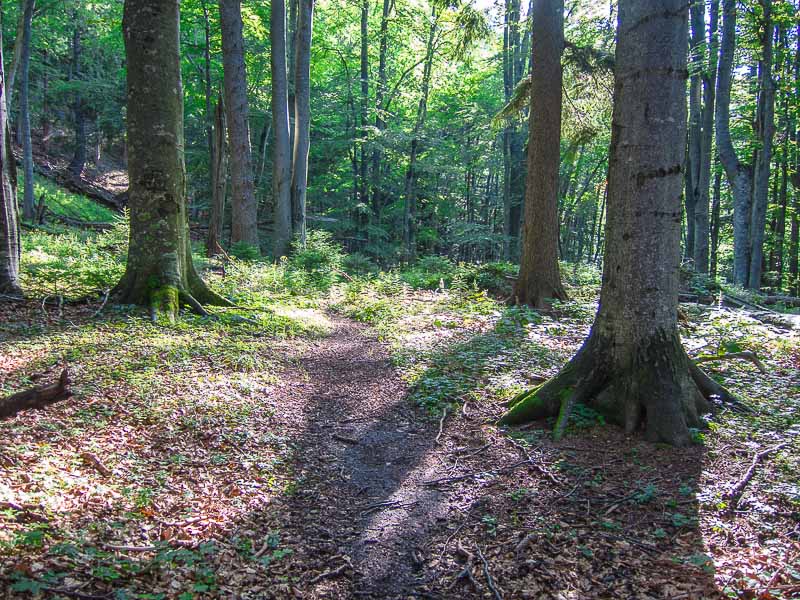
Subsequentlyn there is about 350 m of a level walk - ther only short part of the route not leading steeply up.
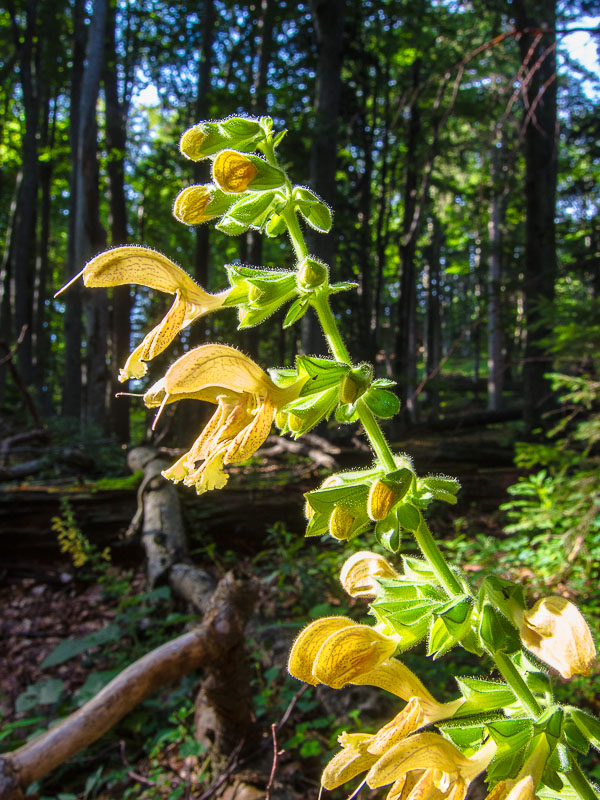
Glutinous sage (Salvia glutinosa) on a clearing.

After near 900 m ascent - we decide for a short detour to enjoy a break at the upper end of the Stadelwand at about 1.407 m asl. The neighbouring Rax plateau can be seern, and in the background, the prominent spike of the Sonnleitstein (1.639 m) can already be seen.
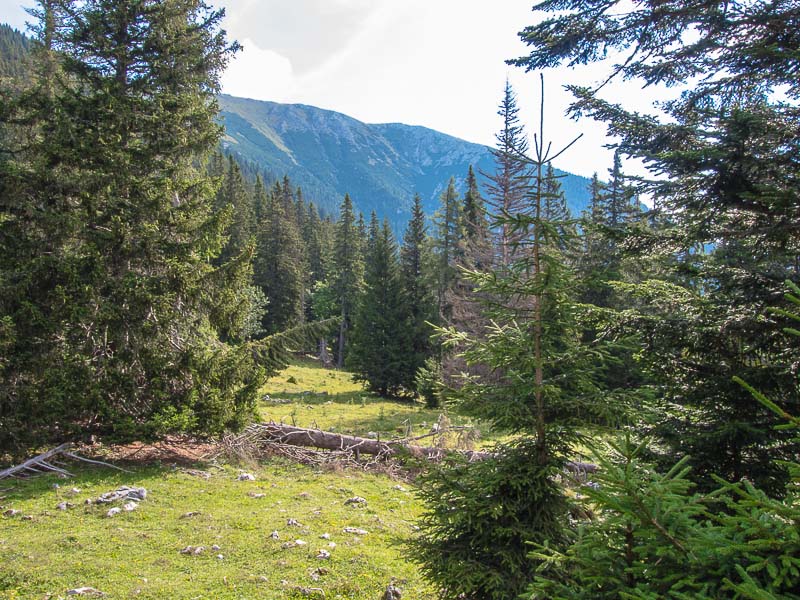
This small Alpine pasture is another short flat of the route where we take a short detour - the actual route passes by.
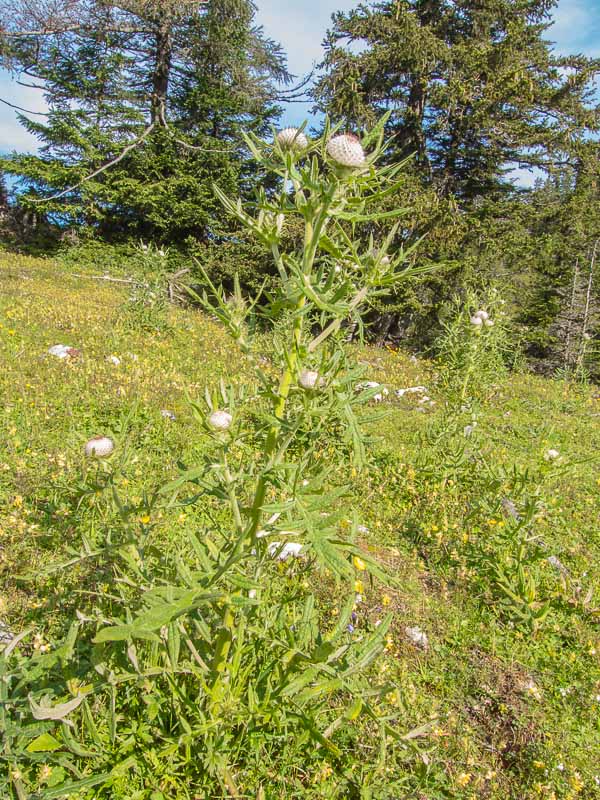
Woolly thistles (Cirsium eriophorum) are growing here, die ...
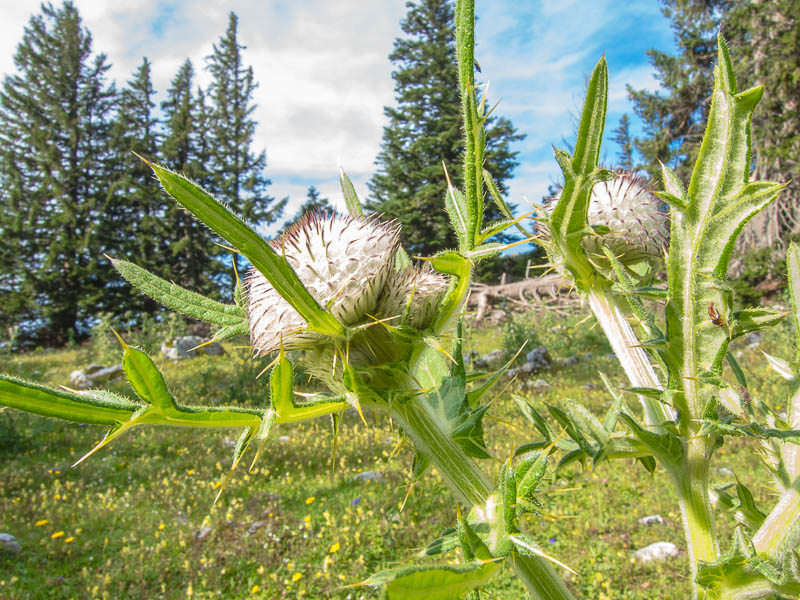
... not yet in flower though.
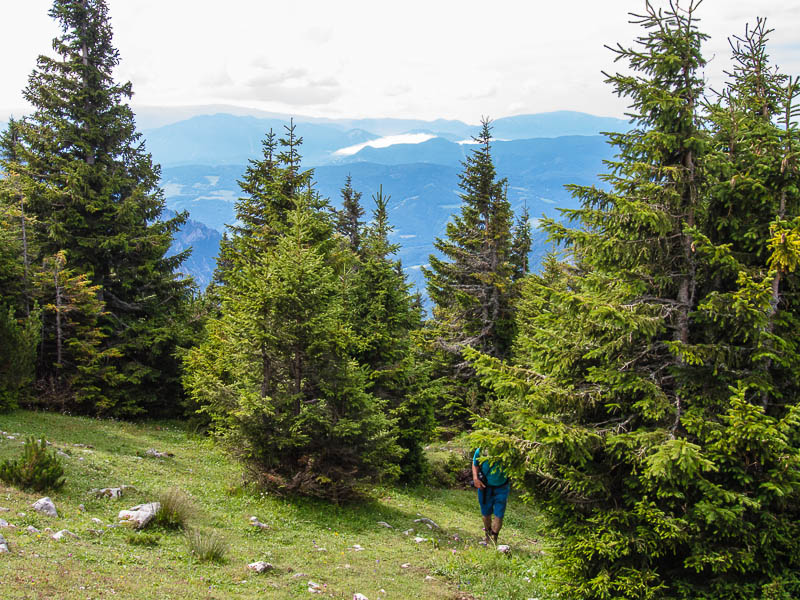
The further ascent leads to the way-crossing with the southern Grafensteig ...
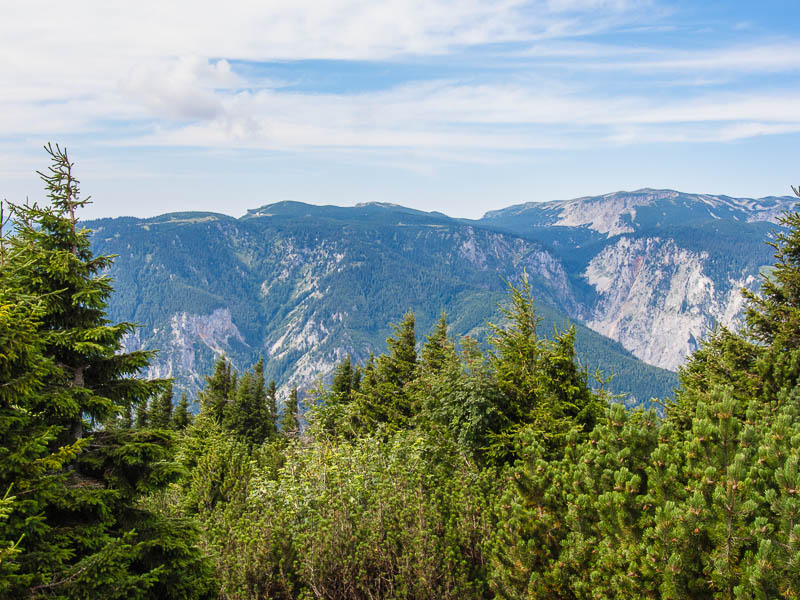
... and, more and more, into open landwith grass and Alpine dwarf pines.

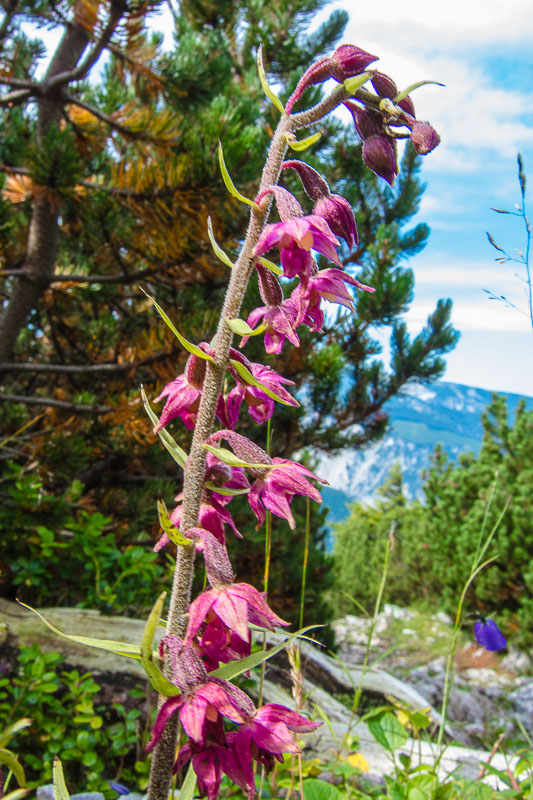
Dark-red helleborine (Epipactis atrorubens) ...

... and close to the former a beautiful European goldenrod (Solidago virgaurea)

Now reached the forest limit. The view goes to Gippel and Göller.
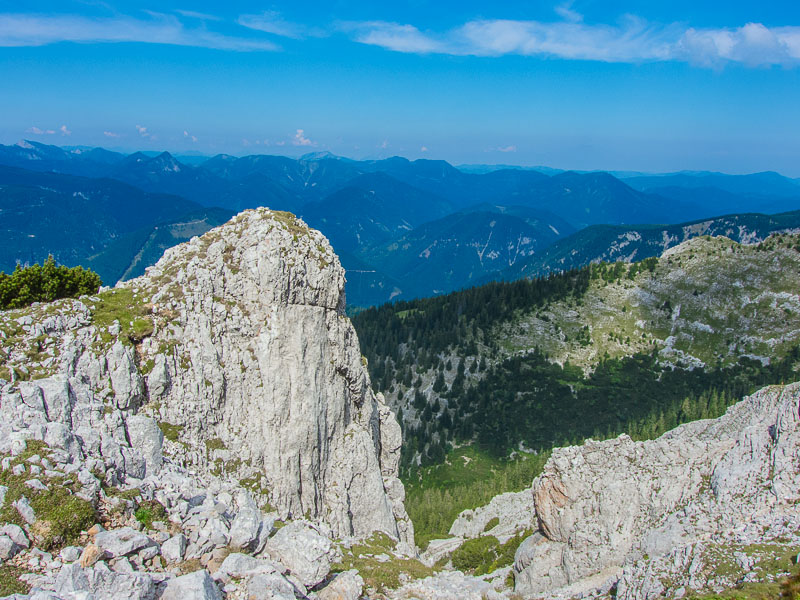
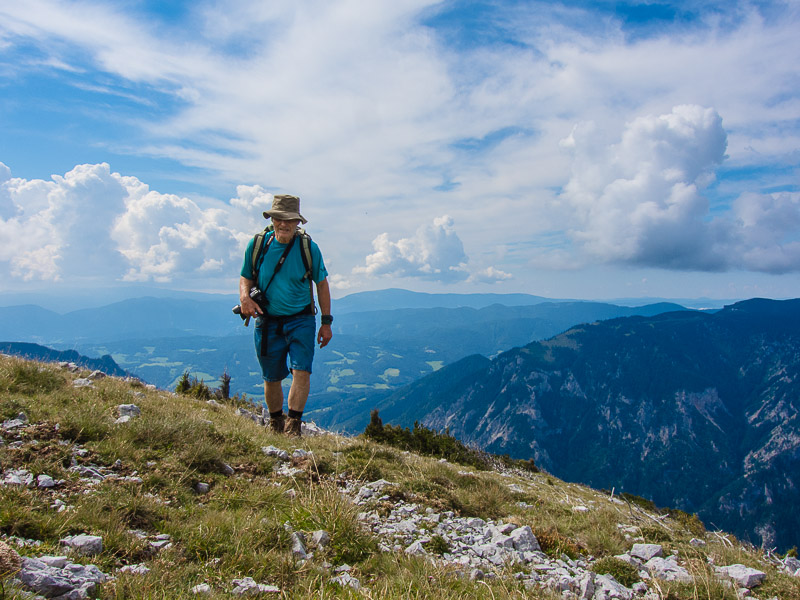
Herwig doesn´t have his fittest day, but he is pertinatious enough to complete the job.
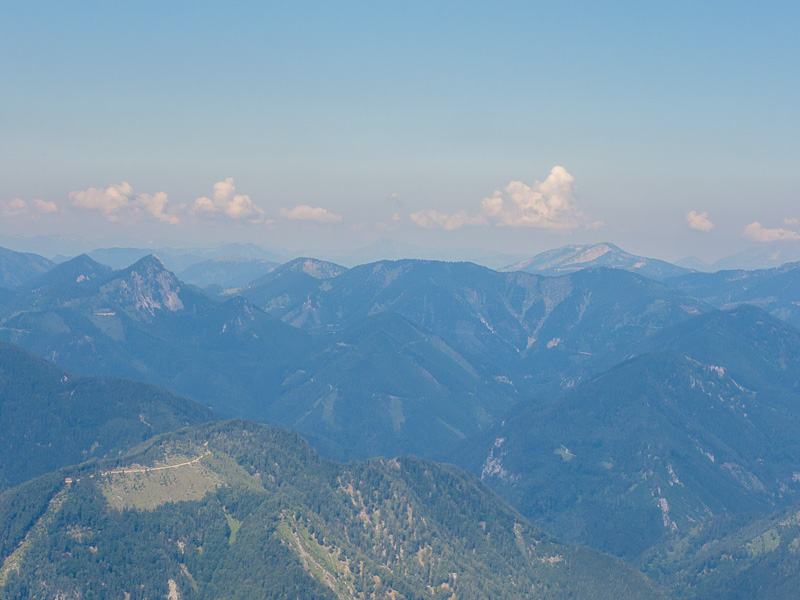
Zoomin in to Sonnleitstein, Gippel and Göller.
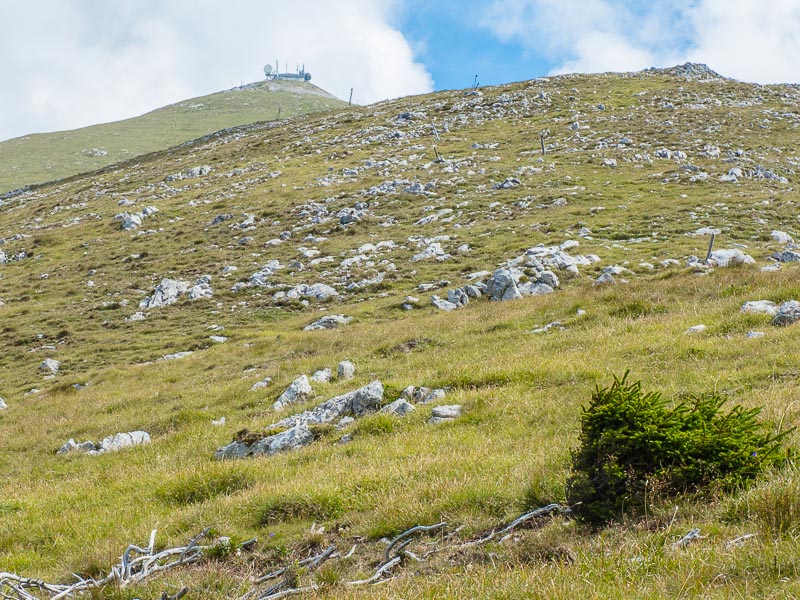
Not so far to the summit, although you mjust not underestimate the distance: still at least 200 m of ascent and half an hour walking.
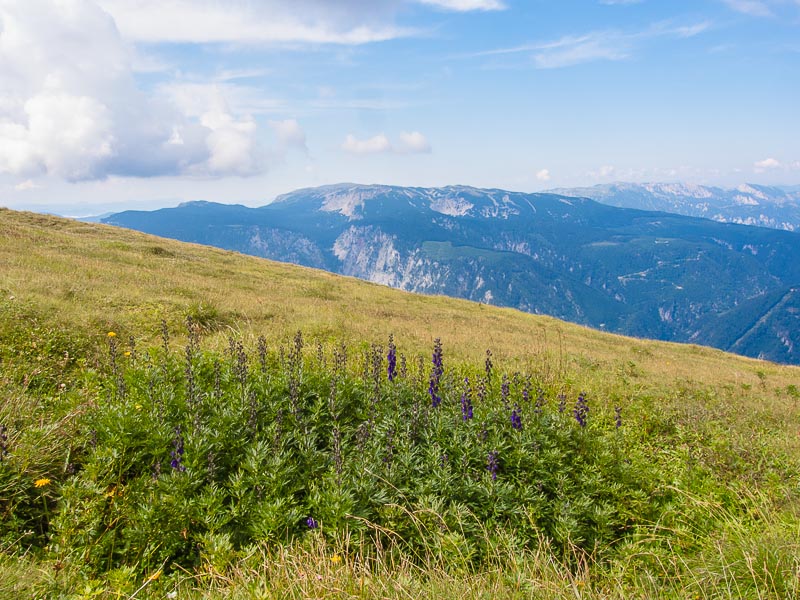
A group of wolfsbane (Aconitum napellus) in a mini - dolina, where the soil is a bit more rich and wet.
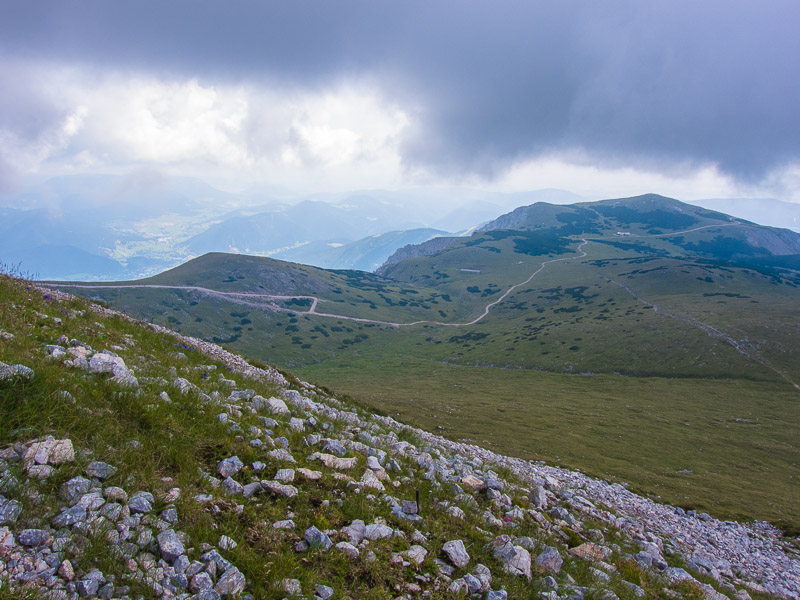
Approaching the summit ...
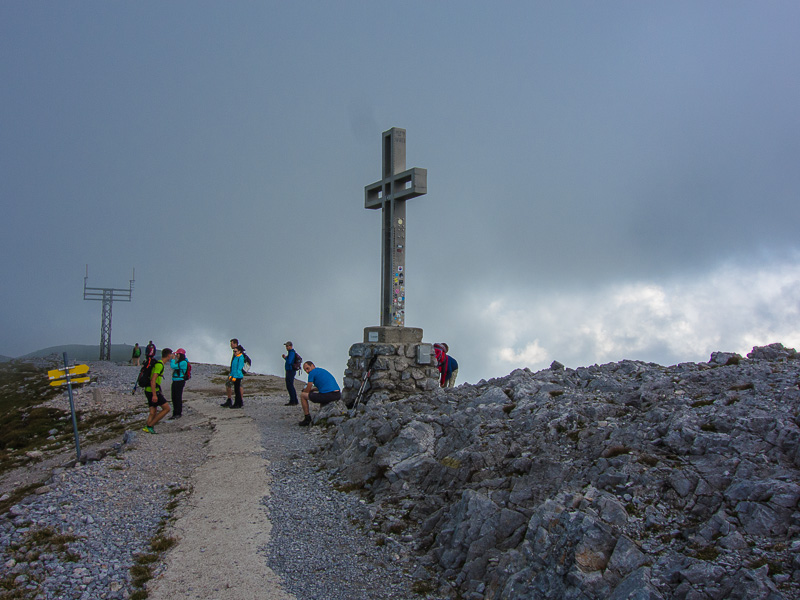
After exactly 5 hours of ascent (including the half hour´s break) we reach the summit at the Klosterwappen. Now, a longer lunch break in the Fischerhütte is urgently necessary.
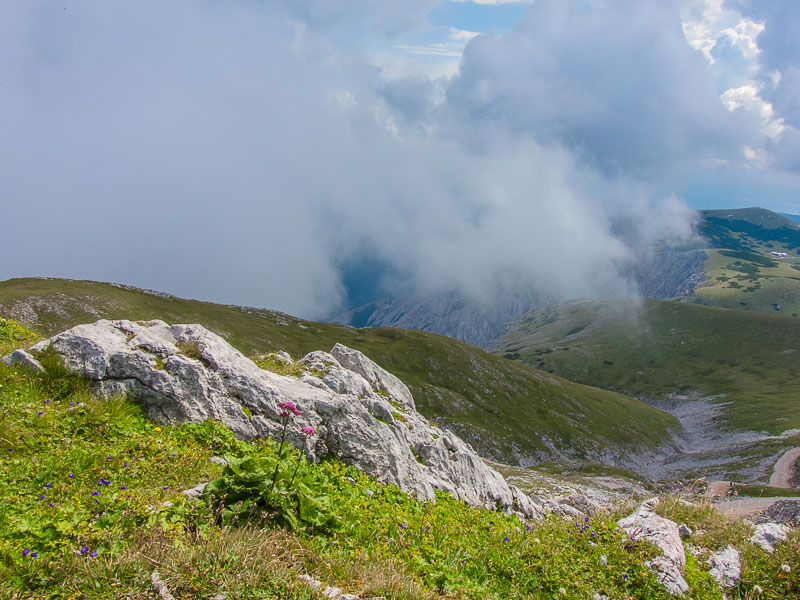
After the break: View over the Schneeberg plateau - mist is swirling around. In the foreground ...
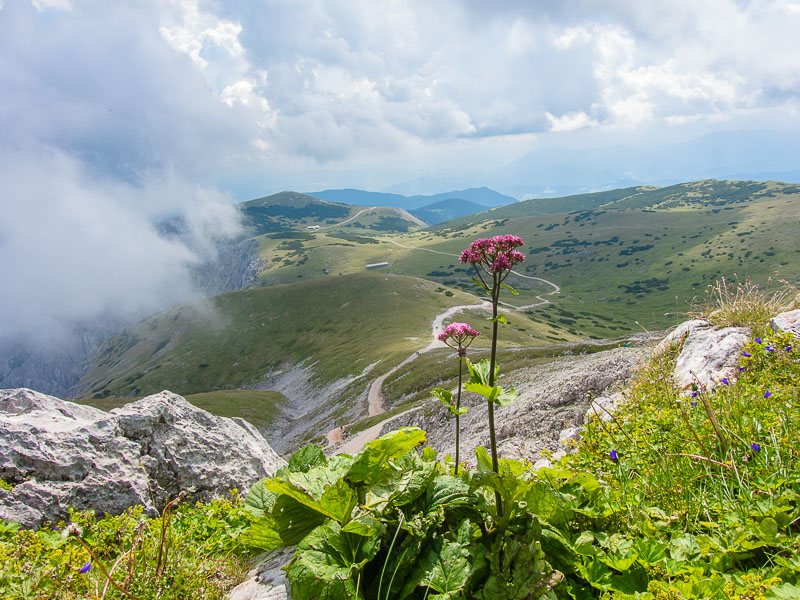
Grüner Alpendost (Adenostyles alpina)
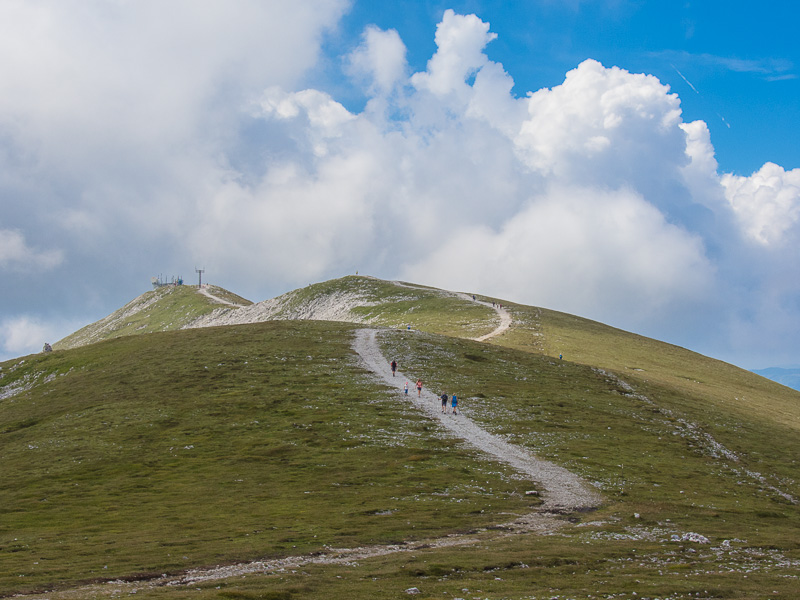
I said farewell to Herwig, who wants to walk down through the Wurzengraben to Kuhschneeberg and the Kientaler hut and the Ferdinand Mayr route down into the Höllental.
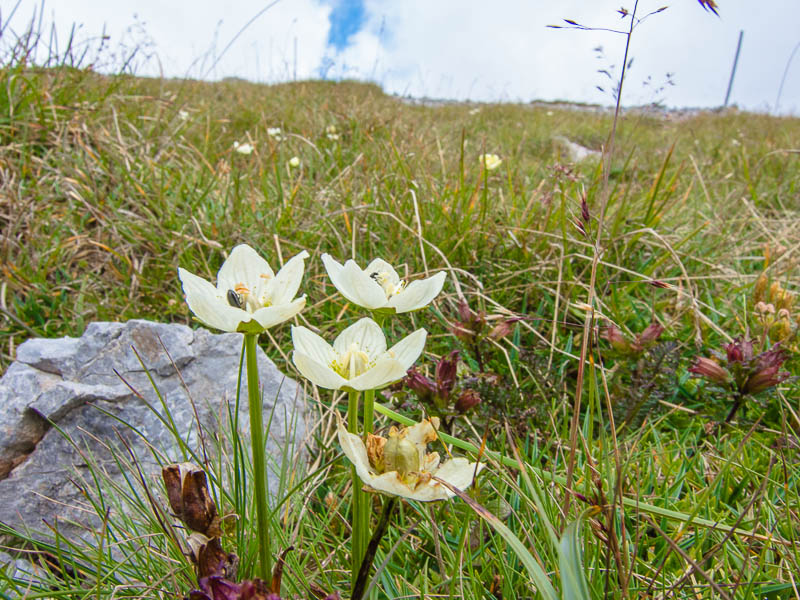
I start my descent now heading for the Schneeberg plateau ab, but try to avoid the gravel road to save my knees and instead prefer the grass down to the Hackermulde and the Ochsenboden. Marsh grass of Parnassus (Parnassia palustris) is rather frequent here.
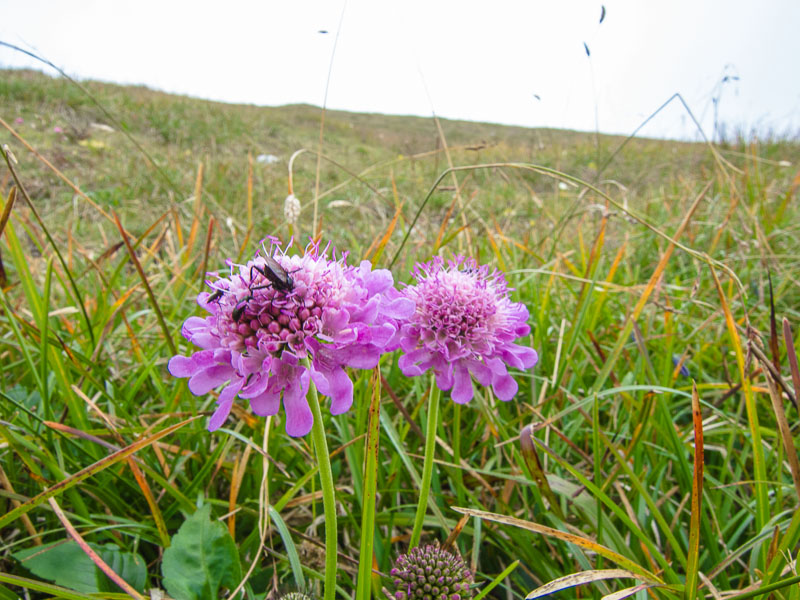
Flowrishing Glanz-Skabiose (Scabiosa lucida) is rather frequent here.
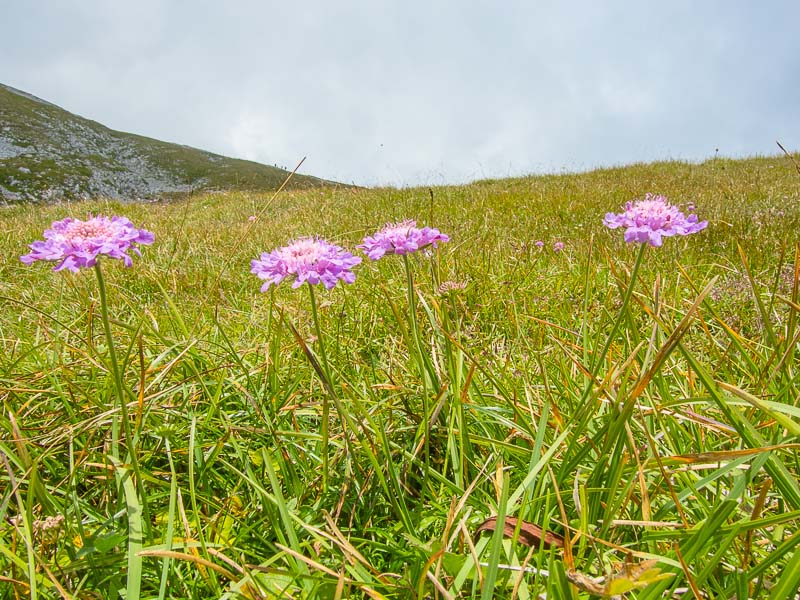
Flowrishing Glanz-Skabiose (Scabiosa lucida)

Flowrishing Glanz-Skabiose (Scabiosa lucida)
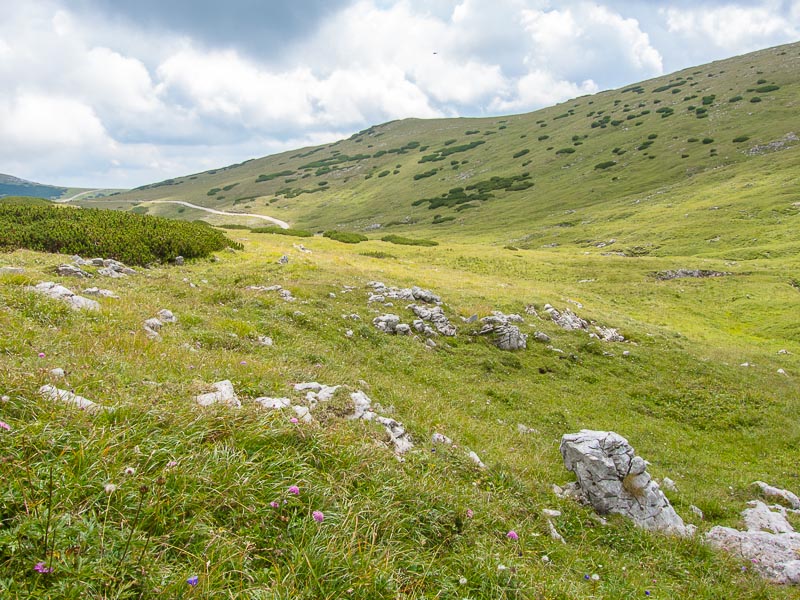
Arrived in the hollow of the Ochsenboden ("Ox plain").
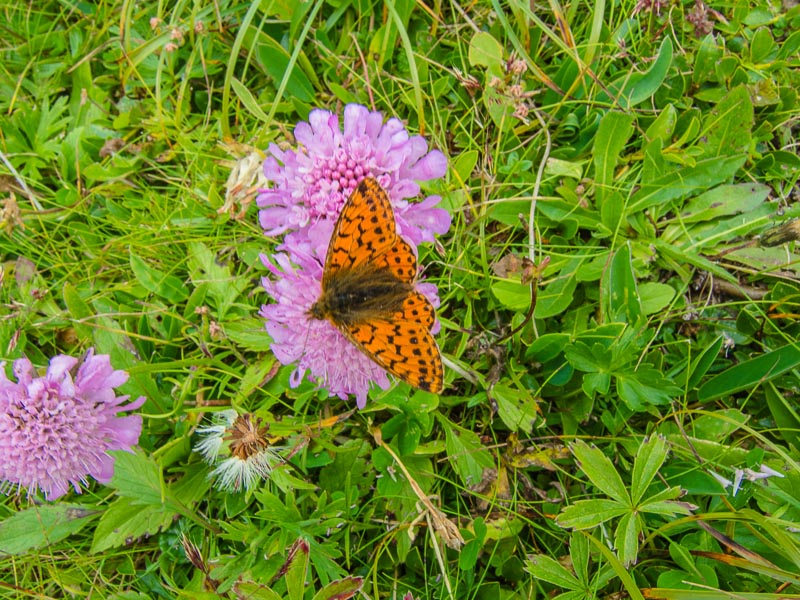
Sheperd´s fritillary (Boloria pales) on a Glanz-Skabiose (Scabiosa lucida)
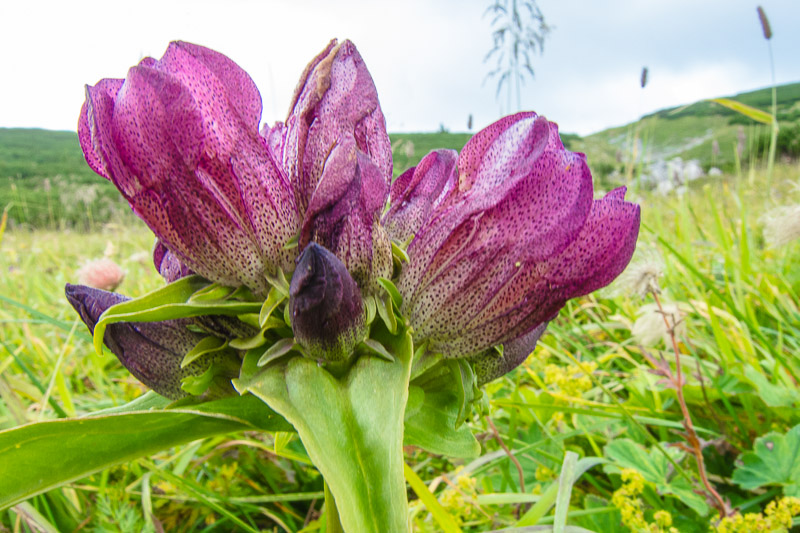
Now to the big dolinas near the Damböck househaus, where the numerous Hungarian gentians (Gentiana pannonica) is in full flower now.
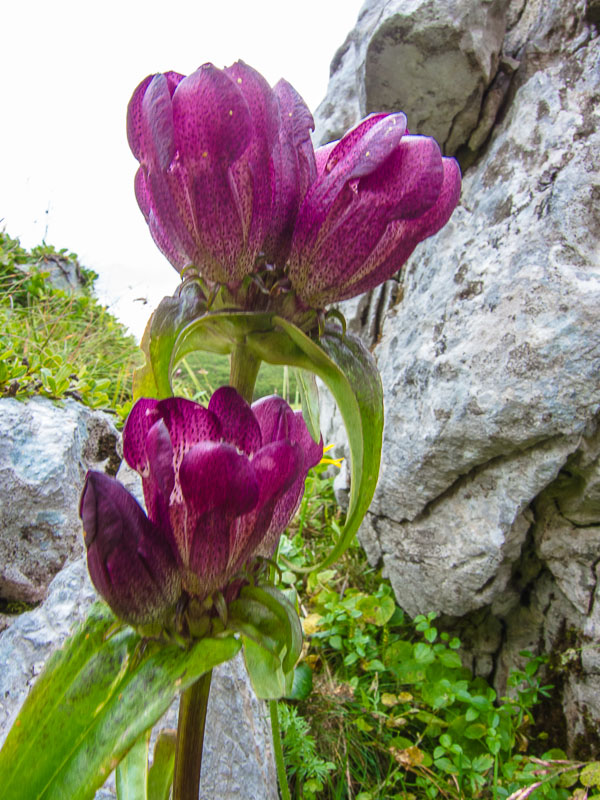
Hungarian gentian (Gentiana pannonica)
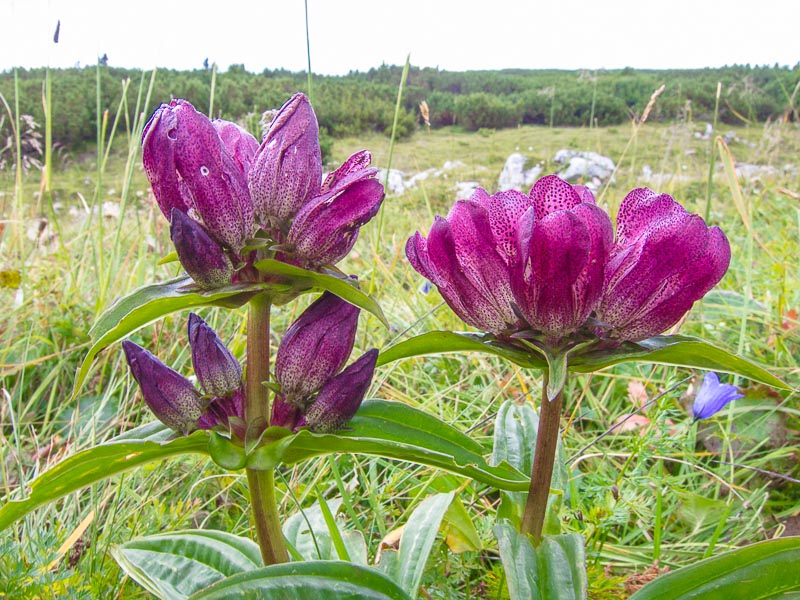
Hungarian gentian (Gentiana pannonica)
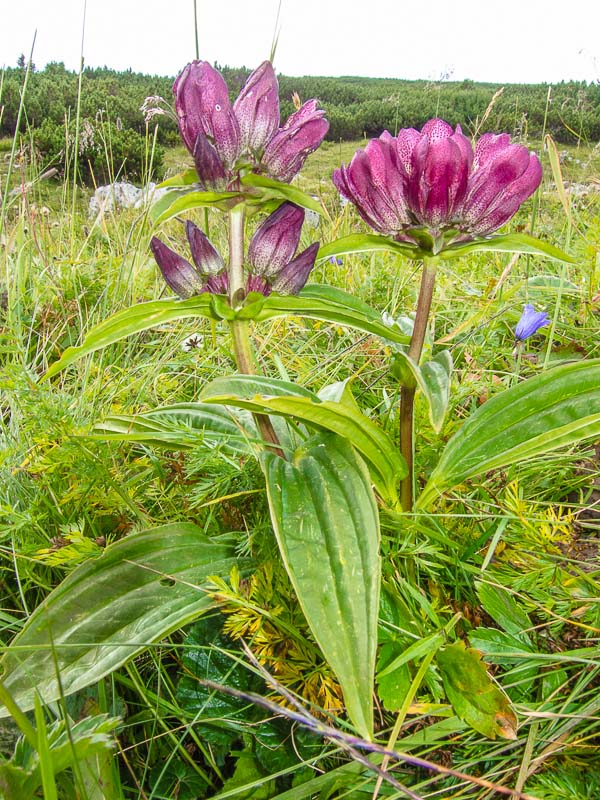
Hungarian gentian (Gentiana pannonica)
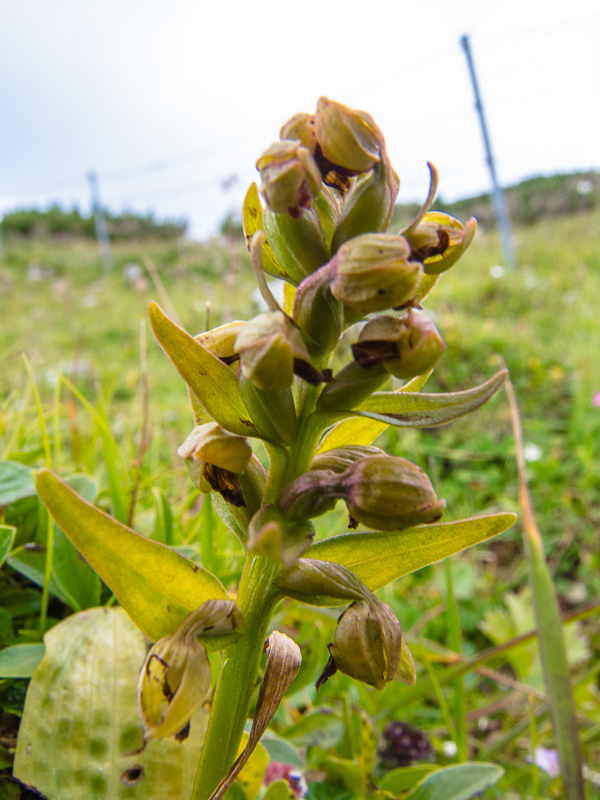
Alpine Zwergorchis (Zwergstendel, Chamorchis alpina)
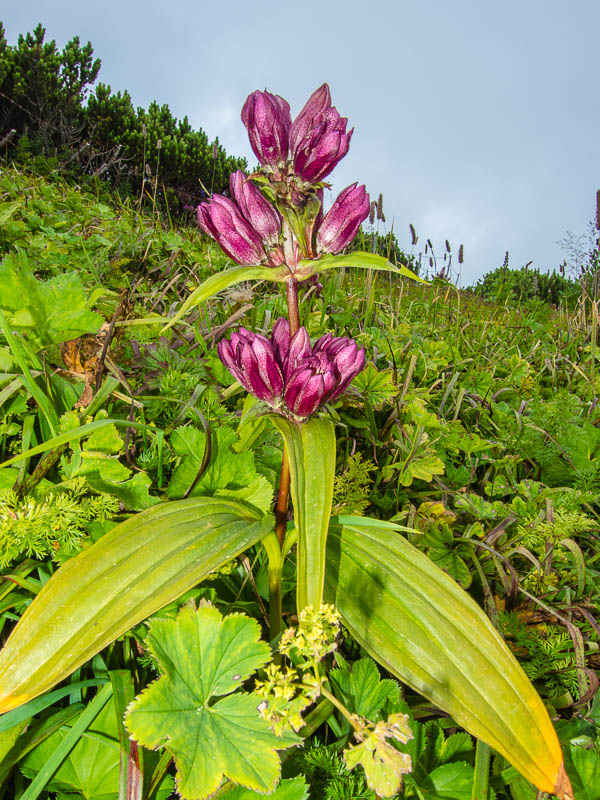
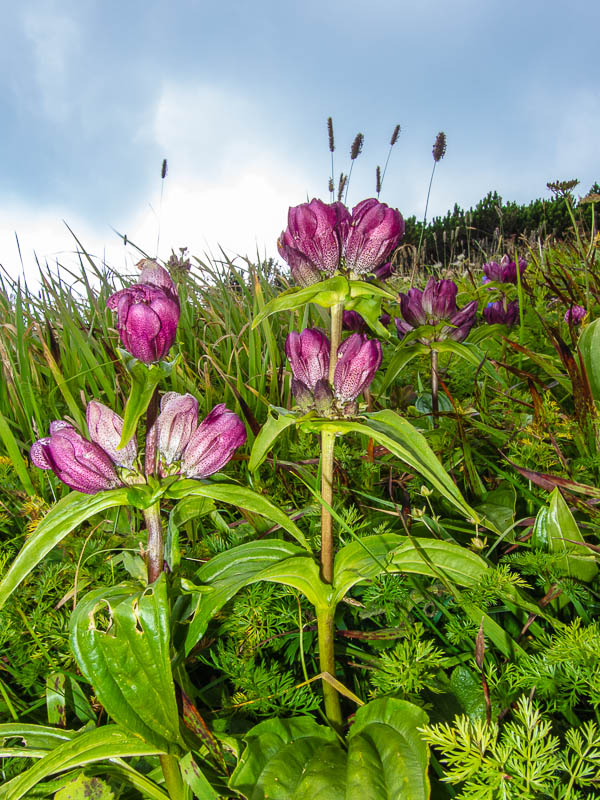
Hungarian gentian (Gentiana pannonica)
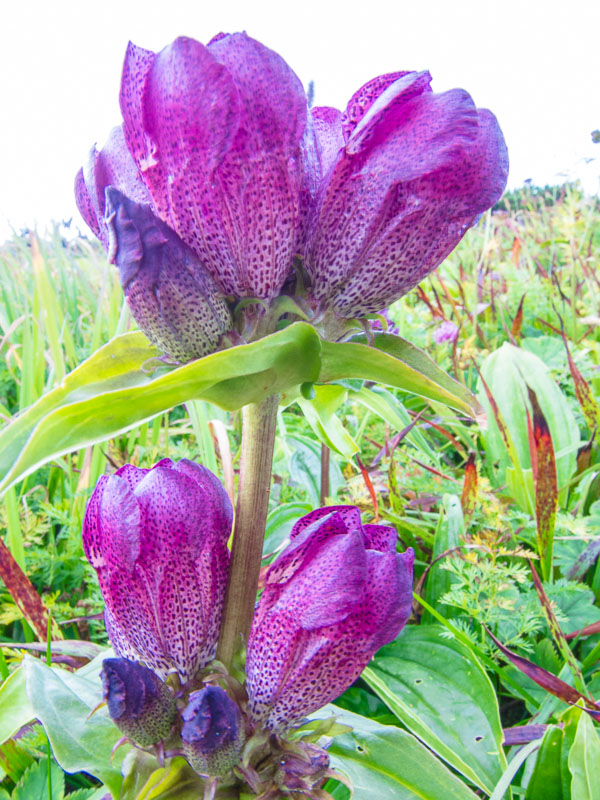
Hungarian gentian (Gentiana pannonica)
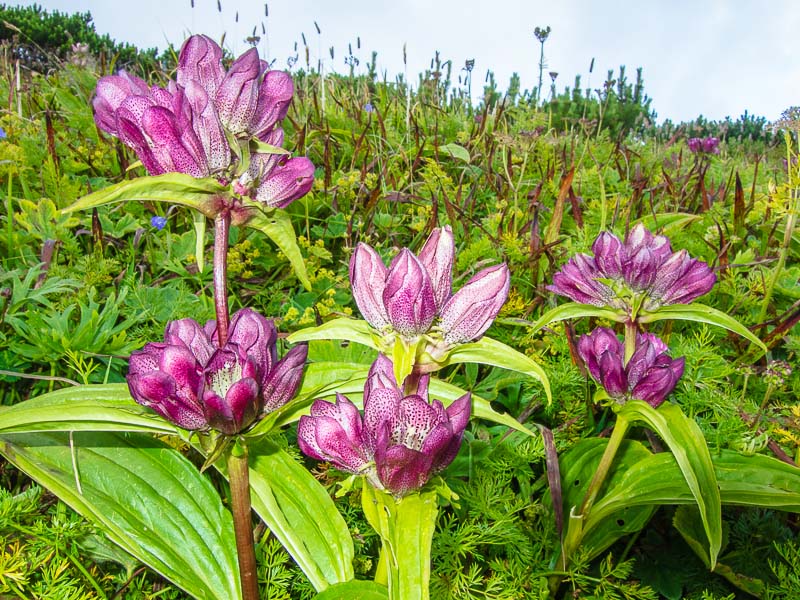
Hungarian gentian (Gentiana pannonica)
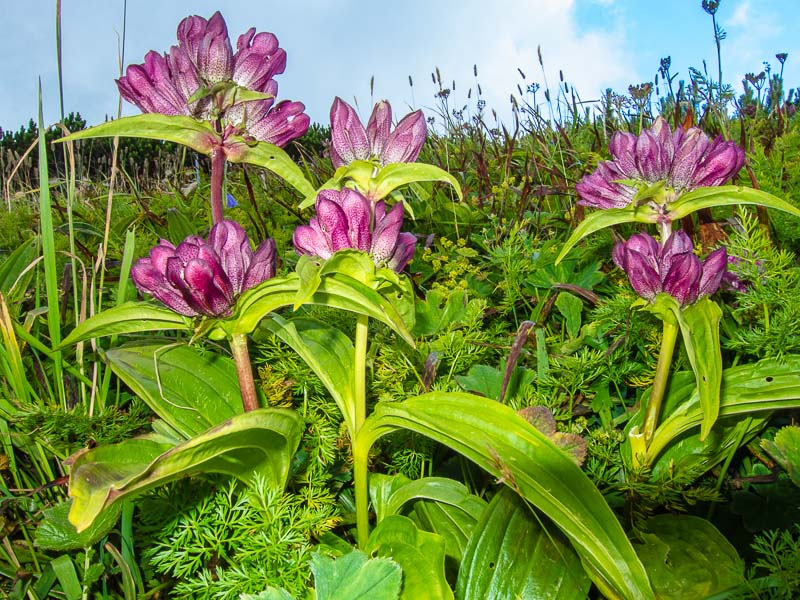
Hungarian gentian (Gentiana pannonica)
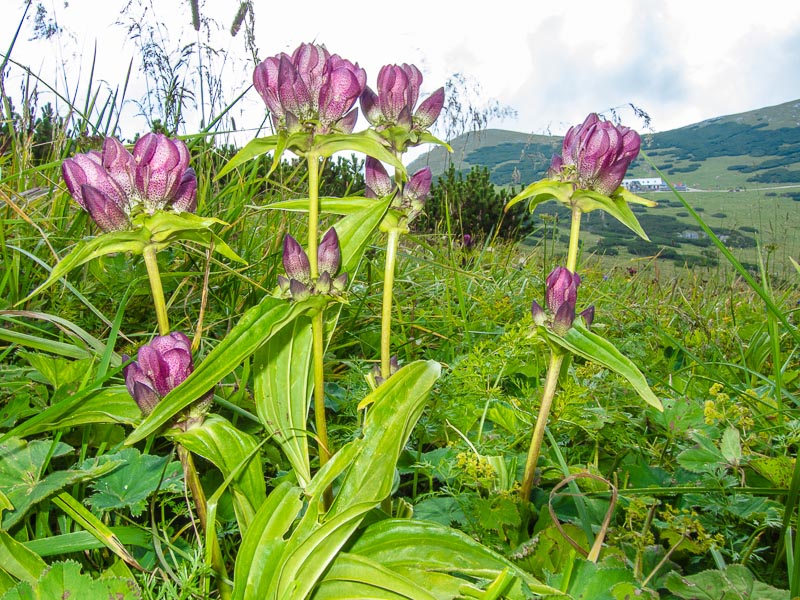
Hungarian gentian (Gentiana pannonica)
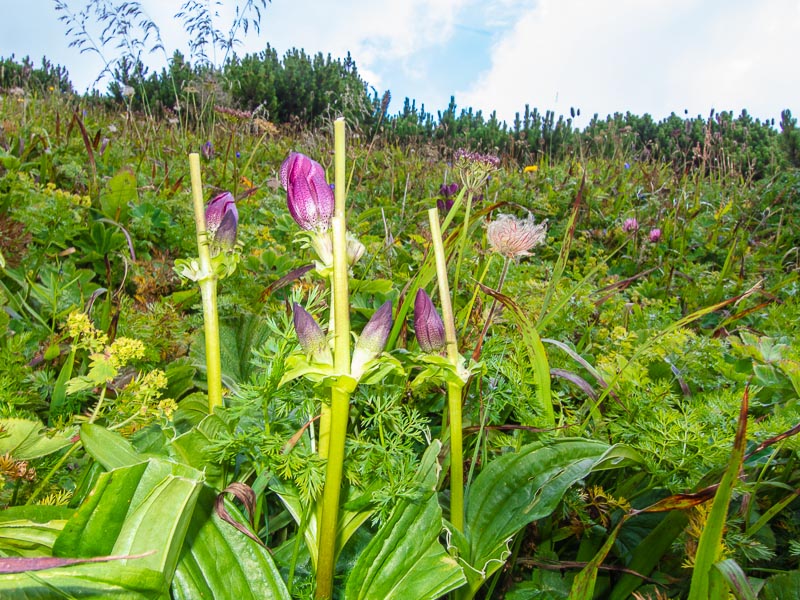
I climbed the barbed wire fence, because mst beautiful flowers are growing within the spring reserve. These seem to have been eaten by chamois - cows cannot enter the area.
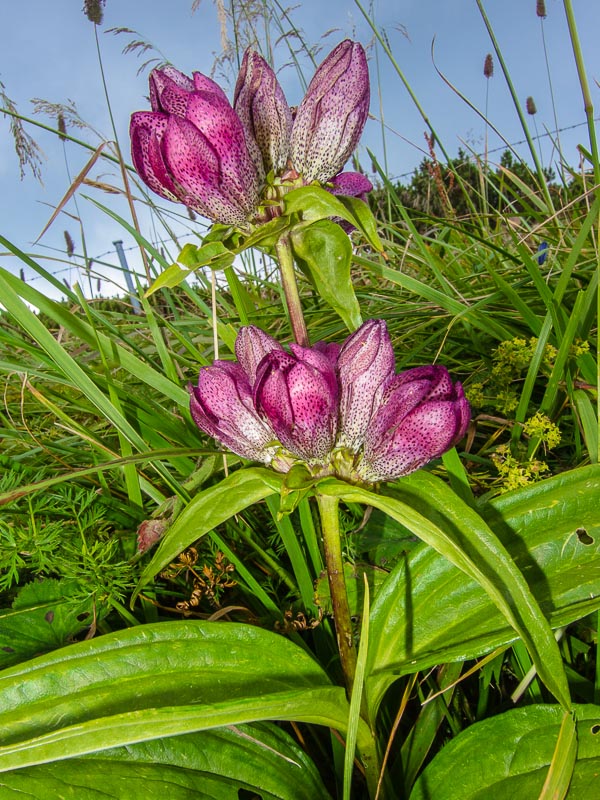
Hungarian gentian (Gentiana pannonica)
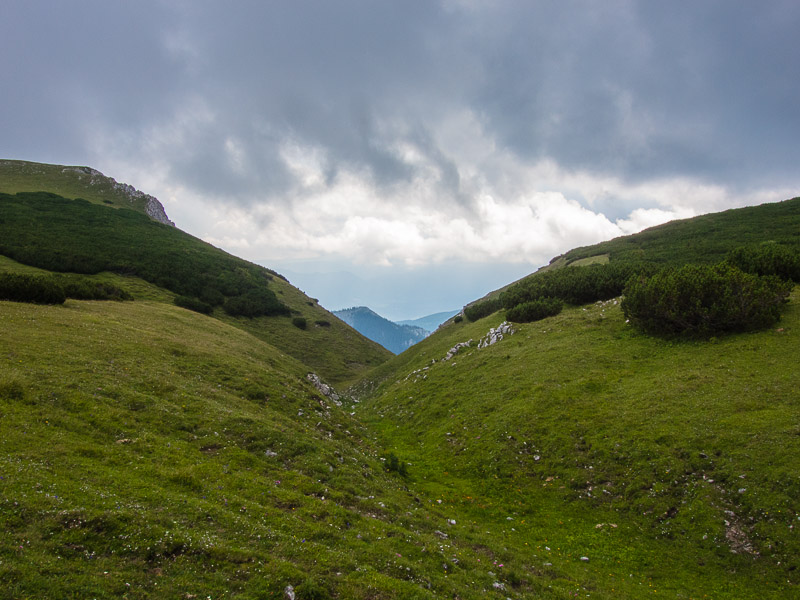
Here, the gully named Saugraben begins, leading down the southern slopes of Schneeberg.
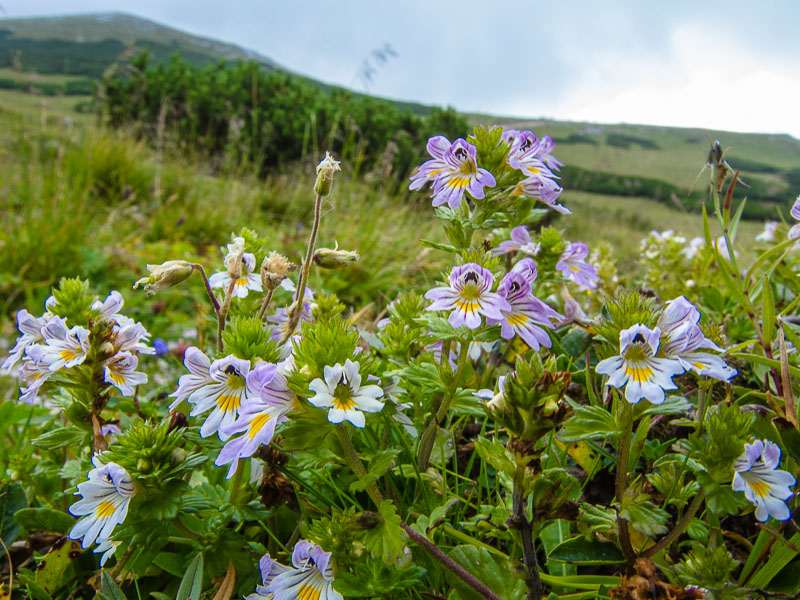
Eyebright (Euphrasia officinalis).
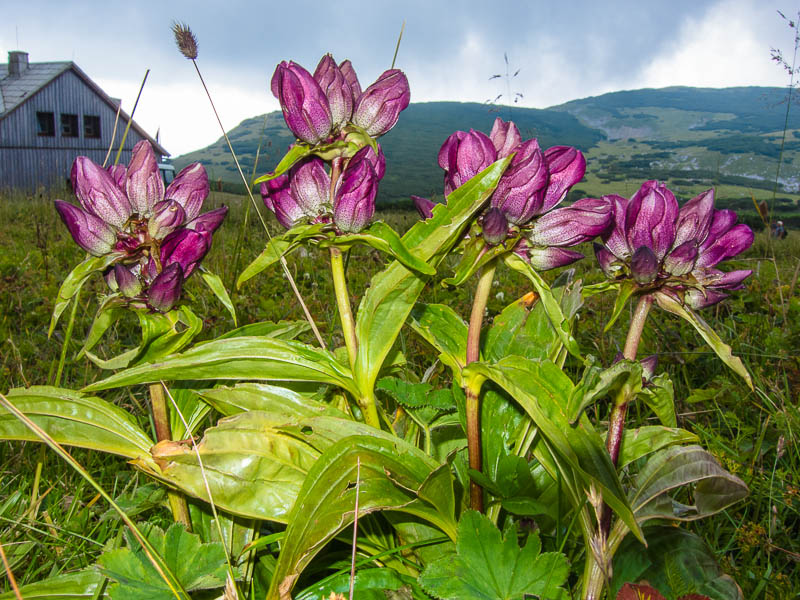
This group of Hungarian gentians (Gentiana pannonica) grows unoffended in a grassland near the Damböck - house, completely fed down by the cows Chamois dont approach this region due to lots of people, but I often saw them around the dolinas. So, it seems that the gentians are eaten by the chamois, but not the cows.
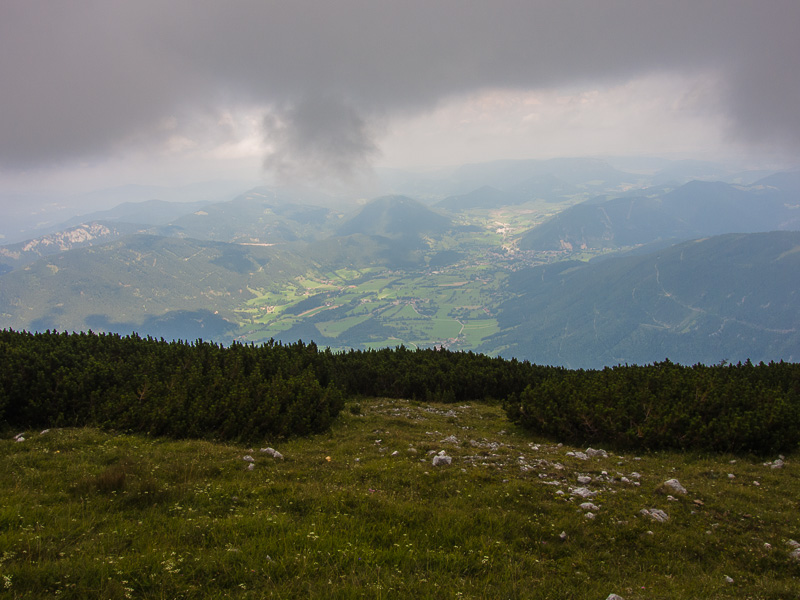
The weather has turned to a bit misty up here ...
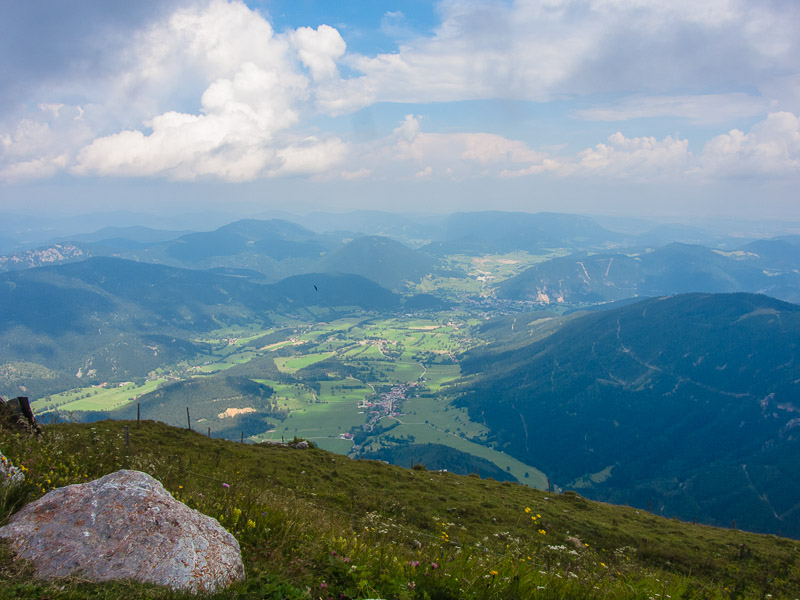
... wheras the sun is shining in Puchberg.